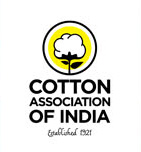11 Mar 2013
Cotton textile exports are said to grow by nine percent this fiscal year despite the global slowdown said Manikram Ramaswami, Chairman of The Cotton Textiles Export Promotion Council, also known as Texprocil, at a recent press conference held in Mumbai.
The industry is expected to reach $9.56 billion against $8.42 billion last year. Yarn exports are expected to grow at eight percent, fabrics at nine percent and home textiles at 10 percent. The textile industry has recovered from the losses incurred in the previous years when both national and international markets were volatile. "The Union Budget 2013-14 has addressed many issues and has given the scope for modernization and expansion of the textile industry", he said.
The TUFS scheme and 'zero excise duty' route have ensured a positive growth this year. The industry is looking into new markets like Japan and Korea where 'zero' import duty is levied and has also set its sight at countries like Australia with which India is expected to sign a free trade agreement. Despite these policies and growth, however, domestic cotton prices continue to rule higher by three to five percent as compared to the international prices.
Ramaswami attributes this to what he calls an 'artificial scarcity' in the market caused by procurement agencies holding over 20 lakh bales of cotton from November 2012 to January 2013. As a solution, the council has suggested certain policy interventions. Texprocil, has requested Cotton Council of India (CCI) and NAFED to commence selling their large inventory so that the artificial shortage can be removed and the prices can be restored to international parity.
They also suggest treating all "cut and sew" products like garments, made-ups and bags on par to promote exports and to notify export benefits under Focus Product Scheme & Market Linked Focus Product Scheme at two digit level HSN Code for Home Textile Sector instead of six or eight-digit levels. The Government should increase exports and reduce current account deficits (CAD) instead of importing cotton at high prices.
"For a profitable textile industry, it is very important to have continuous additional capacity creation required for the huge potential we have today, by way of becoming the most cost efficient manufacturers of cotton textiles and start towards achieving a growth rate of 20 percent", Ramaswami told the reporters. (Source: /www.indiaretailing.com)
